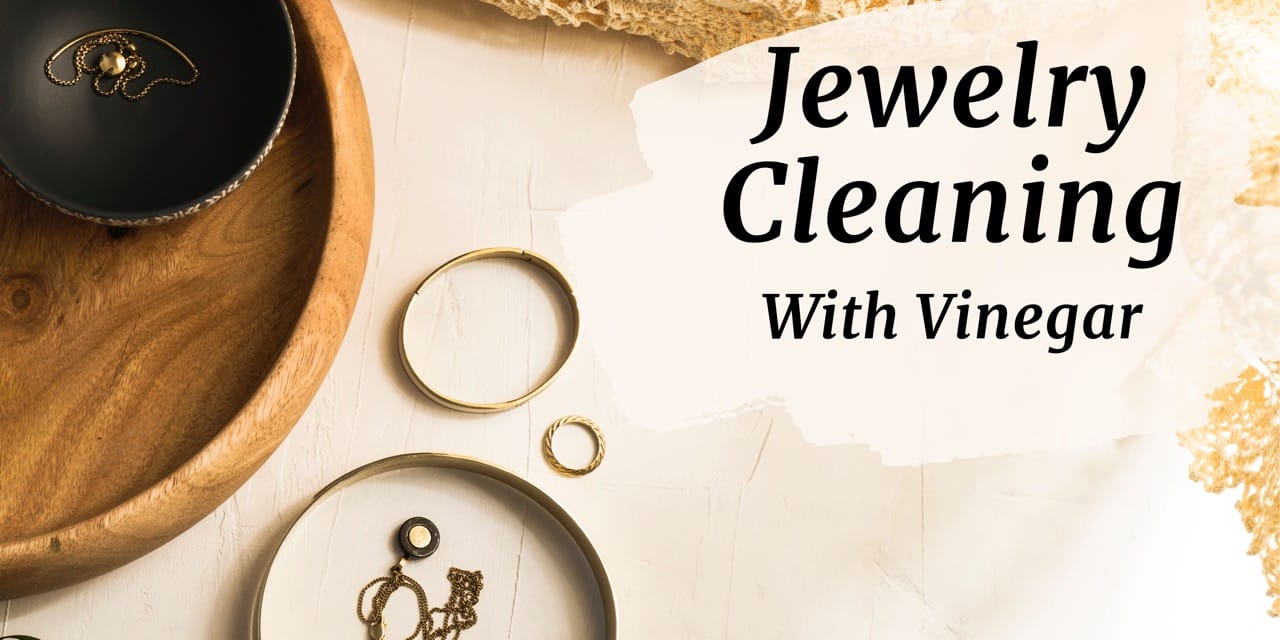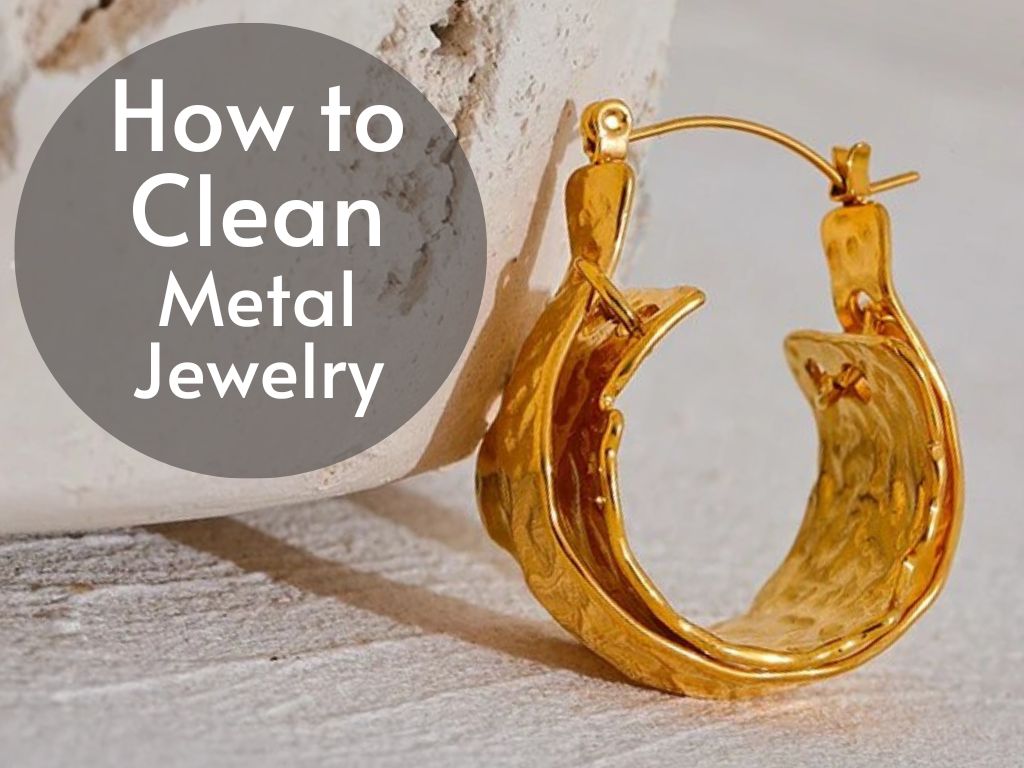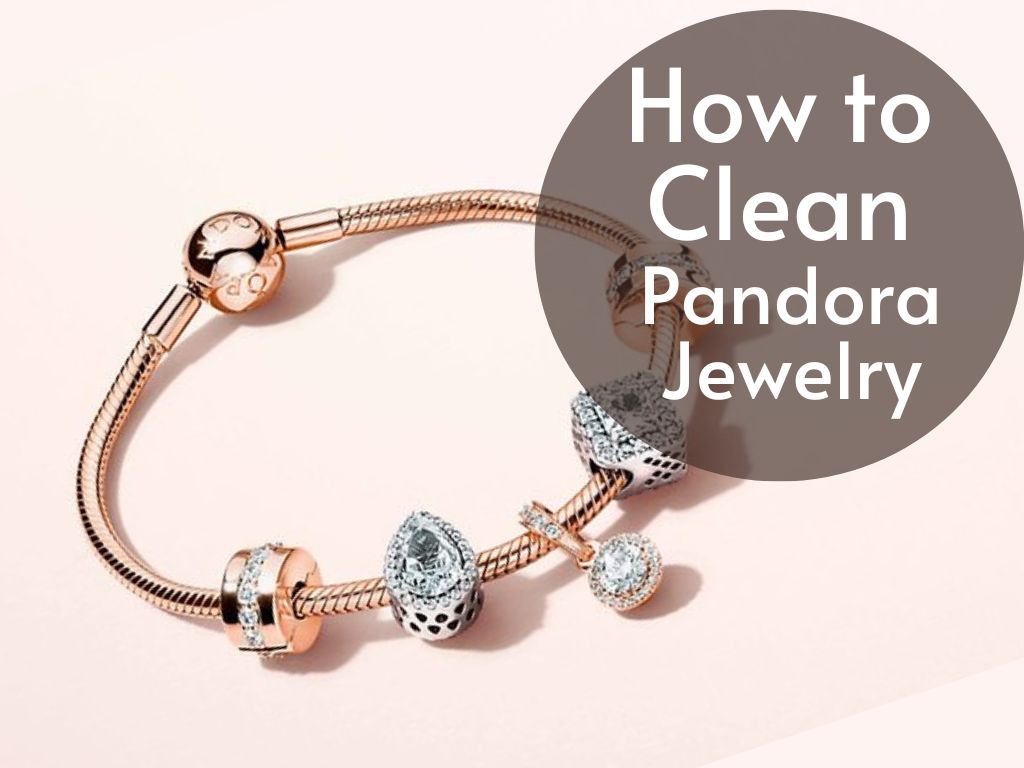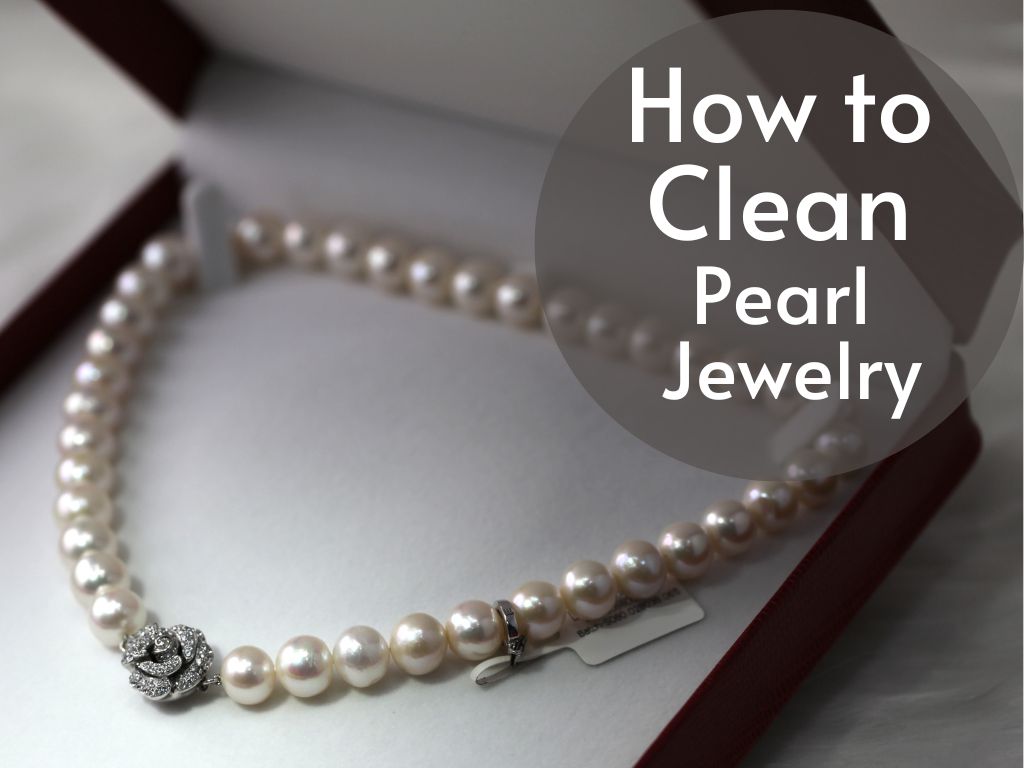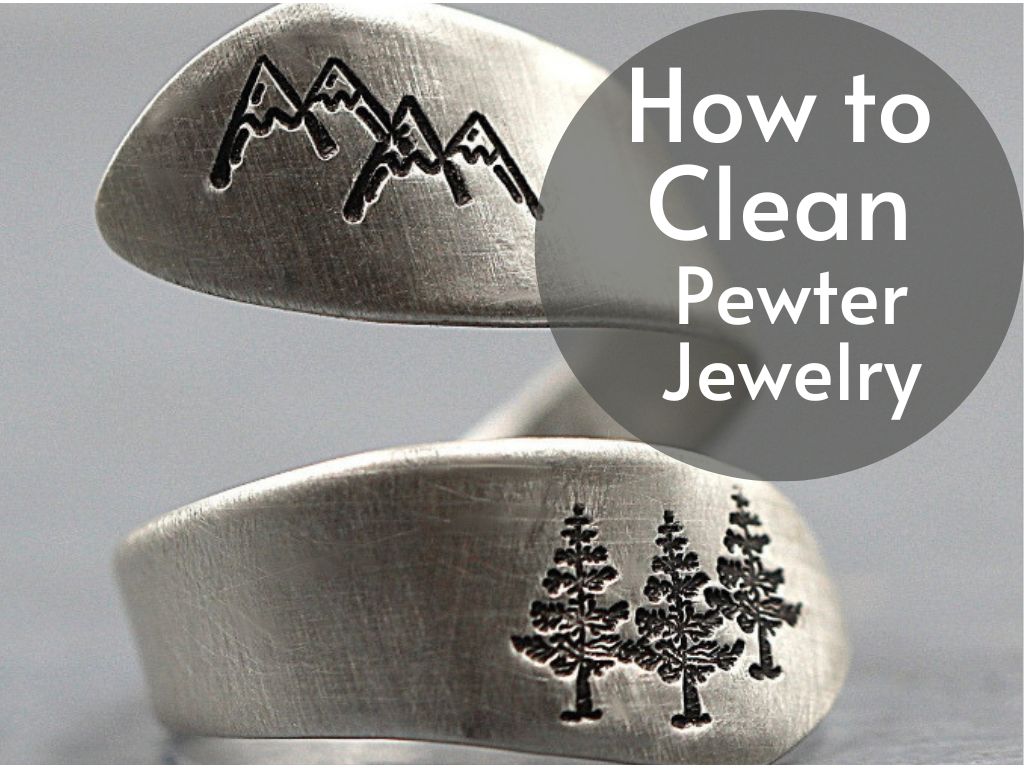Gold jewelry is not just a fashion accessory; it is an investment and a symbol of prestige. Whether it’s a cherished family heirloom or a recent purchase, maintaining the shine and brilliance of gold jewelry is essential to preserve its value and beauty. Over time, gold jewelry can accumulate dirt, oils, and tarnish, causing it to lose its luster.
Regular cleaning is paramount to ensure that your prized possessions continue to sparkle and radiate elegance. When it comes to cleaning gold jewelry, there are numerous commercial cleaning products available in the market.
However, these products often contain harsh chemicals that can be abrasive and damaging to delicate gold surfaces. This is where vinegar comes into play as a natural alternative that offers impressive results without compromising the integrity of your precious pieces.
Overview of the Importance of Cleaning Gold Jewelry Regularly
Cleaning gold jewelry on a regular basis goes beyond maintaining its aesthetic appeal; it also ensures longevity and durability. Gold is relatively soft compared to other metals commonly used in jewelry making, which makes it susceptible to scratches and damage caused by everyday wear.
Additionally, dirt, dust particles, oils from our skin, lotions, perfumes, and even sweat can accumulate on the surface of gold jewelry over time. If left uncleaned for extended periods, these accumulated elements can form a stubborn layer that hampers the natural shine of the metal.
Moreover, tarnish may develop due to exposure to air or certain environmental factors such as humidity or pollutants present in the atmosphere. Tarnish not only dulls the appearance of gold but also creates an uneven patina on its surface.
Introduction to Vinegar as a Natural and Effective Cleaning Agent
Vinegar has long been recognized for its remarkable versatility as a natural cleaning agent in various household applications. Derived from the fermentation of ethanol, vinegar is primarily composed of acetic acid, which possesses mild acidic properties.
When it comes to cleaning gold jewelry, the acidic nature of vinegar makes it effective in breaking down dirt, grime, and tarnish without causing harm to the metal itself. The gentle yet powerful cleaning action of vinegar is particularly suitable for gold jewelry as it helps restore its original shine and luster.
Furthermore, vinegar is a safe and non-toxic alternative compared to commercial cleaning products that often contain harsh chemicals. It not only protects your skin from potential irritants but also ensures that you are not exposing yourself or the environment to harmful substances during the cleaning process.
Brief Explanation of Gold Purity Levels (Karats)
Gold purity is measured in karats, which indicates the amount of pure gold present in a piece of jewelry. It is essential to understand these purity levels to appreciate the value and durability of gold jewelry.
The most common karat values are 24K, 18K, 14K, and 10K. 24K gold is considered pure gold since it contains 99.9% gold content.
However, it is rarely used for jewelry due to its softness and susceptibility to scratches or dents. On the other hand, 18K gold consists of 75% pure gold mixed with other metals like copper or silver for added strength and durability.
This karatage strikes a balance between purity and practicality, making it an ideal choice for fine jewelry. 14K gold is a popular choice for both high-quality jewelry and everyday wear due to its affordability and durability.
It contains 58.3% pure gold blended with other metals like nickel or palladium. The lowest karatage commonly used in jewelry is 10K, which includes only about 41.7% pure gold but offers increased strength and resistance against wear.
Different Types of Gold Jewelry
Gold jewelry comes in various forms that cater to different fashion tastes and personal preferences. Rings are one of the most common types of gold jewelry worn on fingers as symbols of love, commitment, or style statements. They can range from simple bands to intricate designs adorned with gemstones.
Necklaces are another popular category that encompasses chains made entirely from gold or combined with pendants that add uniqueness to each piece. Apart from necklaces worn around the neck, bracelets also contribute significantly to wrist adornment options with their diverse designs.
Earrings offer a wide variety of options too – studs, hoops, danglers – crafted using gold as the primary material. These pieces can be embellished with diamonds, gemstones, or even pearls to enhance their aesthetic appeal.
Common Reasons for Gold Jewelry to Lose Its Shine and Luster Over Time
Despite gold’s inherent durability, several factors can lead to a loss of shine and luster over time. Firstly, everyday wear exposes jewelry to dirt, oils from the skin, and environmental pollutants that can accumulate on the surface.
This buildup of grime can make the jewelry appear dull. Moreover, contact with lotions, cosmetics, and perfumes can create a thin layer of residue on gold jewelry, diminishing its natural radiance.
Additionally, sweat and natural body oils contribute to tarnishing over time. Furthermore, friction between different pieces of jewelry or rough surfaces may cause tiny scratches or abrasions that diminish the overall shine.
Exposure to chemicals such as chlorine in swimming pools or harsh cleaning agents may cause discoloration or damage in some cases. By understanding the various types of gold jewelry available and why they lose their luster over time due to common factors mentioned above – one can fully grasp the importance of regular cleaning and maintenance for preserving their beauty and longevity.
Benefits of Using Vinegar for Cleaning Gold Jewelry
Vinegar as a Safe and Non-Toxic Alternative to Harsh Chemical Cleaners
When it comes to cleaning gold jewelry, using vinegar as a natural cleaning agent brings several notable benefits. One of the most significant advantages is that vinegar provides a safe and non-toxic alternative to harsh chemical cleaners.
Unlike commercial cleaning products that often contain chemicals that may be harmful to both human health and the environment, vinegar is an all-natural solution. Vinegar, especially white distilled vinegar or apple cider vinegar, contains acetic acid.
This mild acid is effective in breaking down dirt, grime, and tarnish from gold surfaces. Unlike abrasive chemical cleaners that may cause damage or discoloration to delicate jewelry pieces, vinegar gently dissolves impurities without compromising the integrity of the gold.
Effectiveness of Vinegar in Removing Dirt, Grime, and Tarnish from Gold Surfaces
Gold jewelry can lose its shine and luster over time due to exposure to pollutants, body oils, lotions, and other substances present in our everyday lives. This accumulation of dirt and grime can make your precious jewelry look dull and lackluster. Fortunately, vinegar proves highly effective in restoring the brilliance of gold surfaces.
The acetic acid present in vinegar acts as a natural solvent that helps dislodge dirt particles from intricate designs or hard-to-reach areas on your jewelry. When used correctly with an appropriate soaking time based on tarnish level, vinegar can effectively dissolve tarnish without causing any damage or scratching to the gold surface.
Additionally, apart from removing dirt and grime build-up on gold jewelry pieces like necklaces or rings with gemstones or pearls attached, it is essential to exercise caution while using vinegar-based solutions as prolonged soaking may harm these delicate additions. Always ensure you follow proper cleaning techniques to maintain the overall integrity and beauty of your jewelry.
Cost-Effectiveness Compared to Commercial Cleaning Products
In today’s market, commercial cleaning products specifically designed for gold jewelry can be quite expensive. However, vinegar provides a cost-effective alternative without compromising on effectiveness.
Whether you choose white distilled vinegar or apple cider vinegar, both options are usually readily available in most households or can be purchased at an affordable price from local grocery stores. While commercial cleaners may promise quick results, they often come with hefty price tags due to branding and marketing strategies.
On the other hand, vinegar offers a budget-friendly option that not only cleans your gold jewelry effectively but also saves you money in the process. With just a small amount of vinegar and some household items like a soft cloth, bowl or container, mild dish soap (optional), and a toothbrush (optional), you can achieve impressive results without breaking the bank.
By opting for vinegar as your go-to cleaning solution for gold jewelry maintenance, you not only save money but also contribute to sustainable and eco-friendly practices by avoiding harsh chemicals found in many commercial cleaners. Remember, when dealing with valuable possessions like gold jewelry, it is crucial to exercise caution while selecting cleaning methods – ensuring that it is safe yet effective is of utmost importance.
Types of Vinegar Suitable for Cleaning Gold Jewelry
When it comes to cleaning gold jewelry with vinegar, there are two primary types that are suitable for this purpose: white distilled vinegar and apple cider vinegar. White distilled vinegar is a clear and colorless liquid that is highly acidic in nature. It is commonly used as a household cleaning agent due to its effectiveness in removing stains and dirt.
On the other hand, apple cider vinegar is made from fermented apples and has a slightly brownish tint. It also contains natural enzymes and acids that make it an excellent choice for cleaning gold jewelry.
Both types of vinegar have their own distinct properties that can help in restoring the shine of your gold jewelry. White distilled vinegar is highly acidic, which aids in breaking down stubborn residue or tarnish on the surface of your jewelry.
It is particularly effective for removing built-up grime or dirt. Apple cider vinegar, on the other hand, offers additional benefits due to its natural enzymes that can help dissolve tarnish more gently without causing any harm to the delicate metal.
Proper Dilution Ratios Based on the Severity of Tarnish or Dirt Buildup
The proper dilution ratio of vinegar depends on the severity of tarnish or dirt buildup on your gold jewelry. For mild cases where there is minimal tarnishing or dirt, you can create a gentle cleaning solution by diluting one part vinegar with three parts water.
This diluted solution will help remove surface dirt effectively without being too harsh on your jewelry. If your gold jewelry exhibits moderate tarnishing or has stubborn stains, you may need to increase the concentration of vinegar in the solution.
In such cases, you can opt for a 50/50 mixture of water and vinegar. This stronger solution will provide more powerful cleaning action to tackle deeper-set stains while still being safe for most types of gold jewelry.
However, it is important to note that for heavily tarnished or delicate gold jewelry with gemstones or pearls, it is advisable to seek professional cleaning services from a jeweler rather than attempting to clean it yourself. This ensures the preservation of your precious gemstones and prevents any damage that may occur from improper cleaning techniques.
Step-by-Step Cleaning Process
Gathering necessary materials: soft cloth, bowl or container, mild dish soap (optional), toothbrush (optional)
Before diving into the cleaning process, it is essential to gather all the necessary materials to ensure a smooth and effective cleaning experience. You will need a soft cloth, such as microfiber or cotton, to gently wipe and polish the gold jewelry.
For soaking the jewelry, you will require a bowl or container that is large enough to accommodate the pieces comfortably. While vinegar alone can be sufficient for cleaning gold jewelry, using a mild dish soap as an additional step can provide extra effectiveness in removing stubborn dirt or grime.
However, it is important to note that using dish soap is optional and should be used sparingly. Choose a gentle dish soap without harsh chemicals that may damage your gold pieces.
In some cases, particularly when dealing with intricate designs or hard-to-reach areas of your gold jewelry, having a toothbrush can be helpful. Opt for a soft-bristle toothbrush dedicated solely for this purpose to avoid scratching or damaging the delicate surfaces of your precious items.
Soaking the gold jewelry in the vinegar solution for a specific duration depending on tarnish level
Once you have gathered all the necessary materials, it’s time to move on to actually cleaning your gold jewelry with vinegar. The first step involves preparing the vinegar solution by mixing equal parts water and vinegar in a bowl or container. The proportions can vary depending on how severely tarnished your gold pieces are – if heavily tarnished, you may increase the ratio of vinegar slightly.
Vinegar acts as an excellent natural cleaner due to its acidic properties that help dissolve tarnish from metal surfaces effectively. When combined with water in appropriate proportions, it creates an ideal solution for reviving your dull gold jewelry.
However, it’s crucial to exercise caution when soaking delicate gemstones or pearls in the vinegar solution. Extended exposure to acidic substances like vinegar can damage these precious stones or make their appearance dull.
To prevent any harm, limit the soaking time for jewelry with gemstones or pearls to just a few minutes. For pure gold items without gemstones, you can soak them for a longer duration, typically ranging from 15 minutes to an hour.
Explaining how vinegar reacts with tarnish to dissolve it effectively
The magic of using vinegar to clean gold jewelry lies in its chemical reaction with tarnish. Tarnish occurs when oxygen and sulfur molecules from the environment come into contact with the gold surface, leading to a darkening effect.
Vinegar’s acidic nature helps break down this tarnish by dissolving the sulfur compounds present in it. As you soak your gold jewelry in the vinegar solution, you will notice that bubbles form on the surface of your pieces.
This effervescence is a sign that the reaction between vinegar and tarnish is occurring. It is important not to be alarmed by this process as it indicates that your cleaning method is working effectively.
By allowing sufficient time for the vinegar solution to work its magic on your gold jewelry, you will witness a gradual improvement in shine and luster as most of the tarnish dissolves away. However, remember not to leave your pieces immersed in vinegar for too long as extended exposure may cause discoloration or damage certain types of gemstones or pearls.
Caution against prolonged soaking for delicate gemstones or pearls
When cleaning gold jewelry that features delicate gemstones or pearls, it’s crucial to exercise caution during the soaking process. As mentioned earlier, extended exposure of these precious stones and organic materials like pearls to acidic substances such as vinegar can cause irreversible damage. Gemstones vary greatly in their tolerance towards acid-based solutions and may react differently when exposed.
To avoid any potential harm, it is recommended to limit the soaking time for jewelry with gemstones or pearls to just a few minutes. Instead of relying solely on vinegar, you can gently clean these pieces using a soft cloth dampened with the vinegar solution.
Remember, prevention is always better than cure when it comes to cleaning delicate jewelry. If you are unsure about the compatibility of certain gemstones or pearls with vinegar, it’s best to consult a professional jeweler who can provide guidance tailored to your specific pieces.
Suggesting gentle agitation during soaking process if necessary
In some cases, particularly when dealing with stubborn tarnish or hard-to-reach areas, gentle agitation during the soaking process can aid in effectively loosening dirt and grime. However, it’s important to exercise caution and only resort to agitation if necessary. To agitate your gold jewelry while immersed in the vinegar solution, you can use a soft-bristle toothbrush dedicated solely for this purpose.
Gently scrub the surface of your gold items in circular motions without applying excessive pressure. This technique helps dislodge any dirt particles clinging onto delicate crevices or intricate designs.
While agitation can be beneficial for certain types of gold jewelry, it’s crucial not to overdo it as vigorous scrubbing may cause scratches or damage fragile pieces. Always assess the fragility of your gold items before employing any form of agitation.
Emphasizing the importance of not mixing different types of metals while soaking
When cleaning gold jewelry using vinegar or any other cleaning agent, it is essential never to mix different types of metals together during the soaking process. Mixing various metals can result in galvanic corrosion – a chemical reaction that causes one metal type to corrode at an accelerated rate when in contact with another metal. To prevent such corrosion from occurring and safeguard your precious gold jewelry from potential damage, always clean each metal separately.
If you have jewelry pieces that are made of different metals, such as gold and silver combined, it’s best to clean them individually using appropriate cleaning methods for each metal type. By adhering to this important guideline, you can ensure that your gold jewelry remains in pristine condition without any adverse effects caused by the cleaning process.
Cleaning Intricate Areas and Chains
Explaining how toothbrushes can be used gently on intricate areas
When it comes to cleaning gold jewelry with intricate designs or chains, a toothbrush can be your best friend. The soft bristles of a toothbrush are perfect for reaching those hard-to-reach places and dislodging any stubborn dirt or grime. However, it is crucial to use the toothbrush gently to avoid scratching or damaging the delicate surfaces of the jewelry.
To start, dip the toothbrush into the vinegar solution and gently brush along the intricate areas of your gold jewelry. Use light circular motions to loosen any dirt or tarnish buildup.
Be mindful not to apply excessive pressure as this may cause damage. If you encounter particularly stubborn spots, use extra care and patience while brushing.
Providing
For chains that have become tangled or clogged with debris, vinegar combined with a gentle brushing technique can work wonders in restoring their shine and luster. Begin by immersing the chain in the vinegar solution for a few minutes to help loosen any dirt or grime trapped within its links.
Then, using your toothbrush, softly brush along each chain link individually to remove any remaining residue. It’s important not to rush through this process; take your time and pay attention to detail.
Rinse the chain thoroughly under running water after cleaning it with vinegar to remove any residual acidity from the solution. Pat dry using a soft cloth before storing or wearing your sparkling clean gold jewelry.
Conclusion
Cleaning your gold jewelry with vinegar is an excellent way to restore its natural beauty without resorting to harsh chemicals that may damage delicate pieces. By following these simple steps and being cautious when cleaning intricate areas and chains, you can enjoy gleaming gold jewelry once again. Remember that regular maintenance is key to preserving the brilliance of your gold jewelry.
By incorporating vinegar as a part of your cleaning routine, you can ensure that your pieces remain radiant and stunning for years to come. So go ahead, embrace the power of vinegar and give your gold jewelry the royal treatment it deserves!

